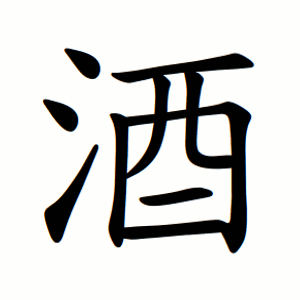酒
- alcohol;
- wine;
- liquor;
- alcoholic beverage in general;
Etymology
A phono-semantic compound:
水 (“water”) — semantic element, indicating liquid.
酉 (yu / jiǔ) — phonetic element, but also originally a pictograph of a wine jar.
Originally, 酉 itself meant a vessel for fermenting liquor. Later, with 水 added, the character 酒 came to denote alcoholic beverages in general.
Radical note: Though 酒 has the 氵 (water radical) on the left, its radical in dictionaries is actually 酉. Many dictionaries also cross-list it under 氵 for convenience.
Usage in Korean
麥酒 (맥주) — beer (lit. “barley wine”)
燒酒 (소주) — soju, distilled liquor
藥酒 (약주) — medicinal liquor
洋酒 (양주) — Western liquor (imported spirits)
飮酒 (음주) — drinking alcohol
酒店 (주점) — tavern, inn, bar
酒舖 (주포) — liquor store
濁酒 (탁주) — unrefined rice wine (cloudy liquor)
Words that derived from 酒
Additional notes
In classical usage, 酒 included all fermented drinks made from grains (millet, rice, barley).
By extension, 酒 can mean banquet, feast (e.g., 酒席 “banquet feast”).
In East Asian culture, 酒 was central to ritual offerings (祭祀), social gatherings, and poetry.
In modern Chinese, 酒 refers broadly to any alcoholic drink, not only wine.
Alternative forms
𨢇
